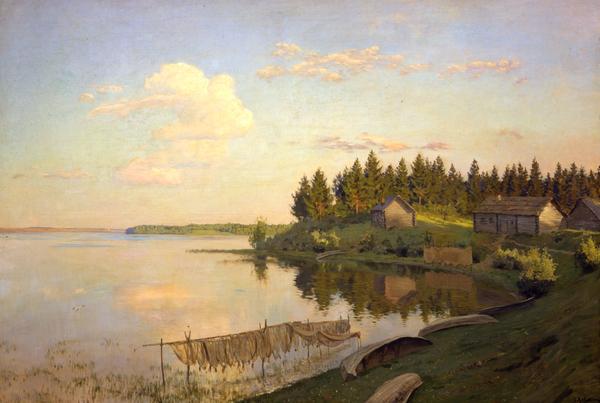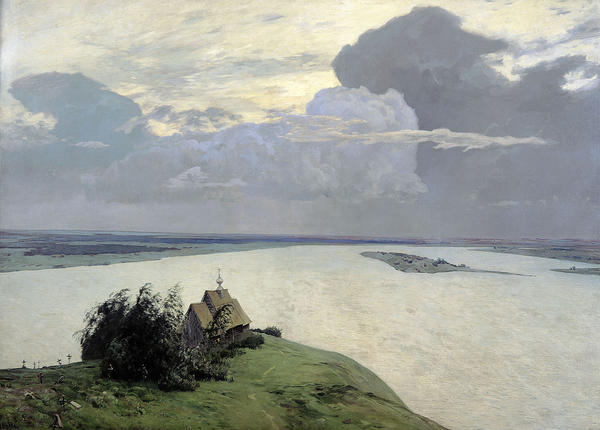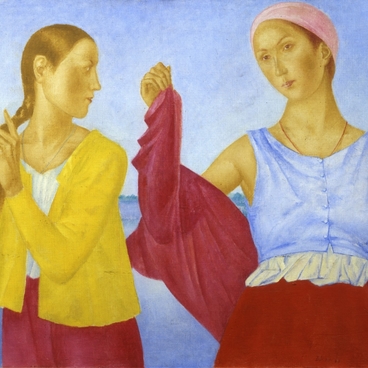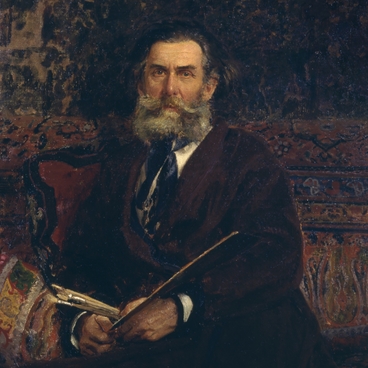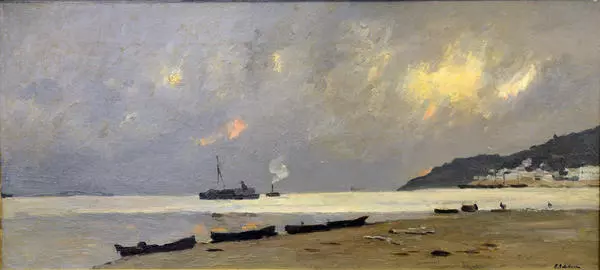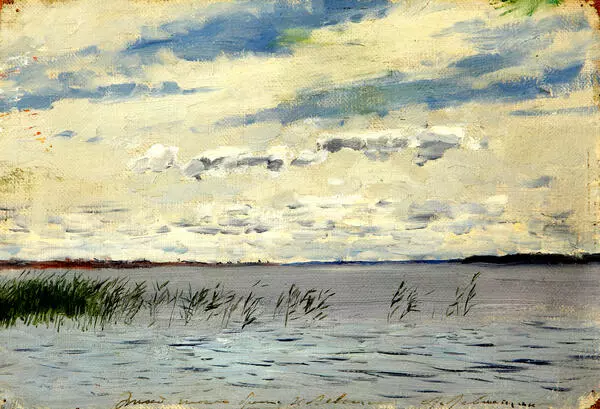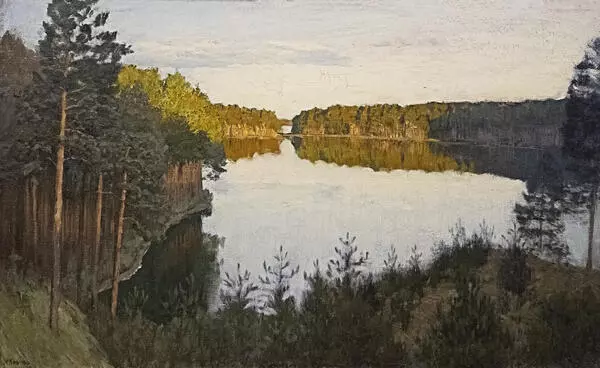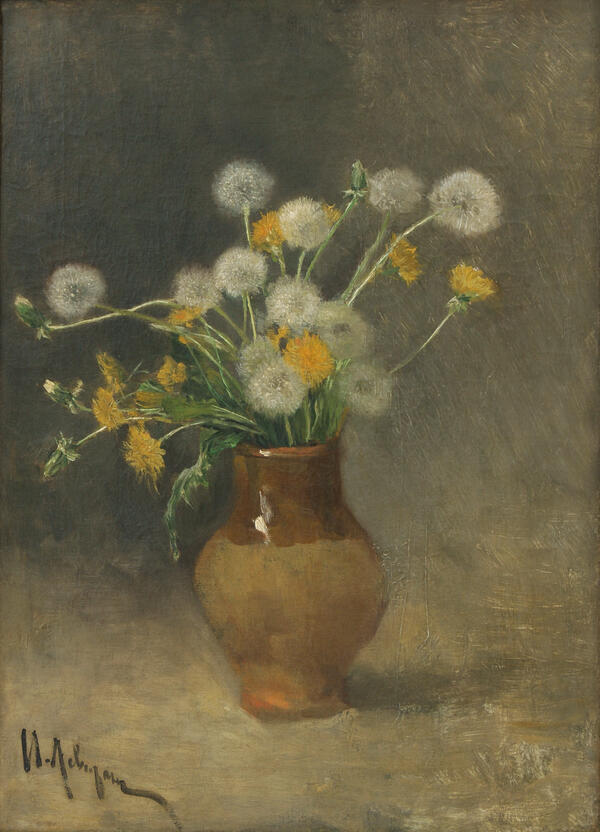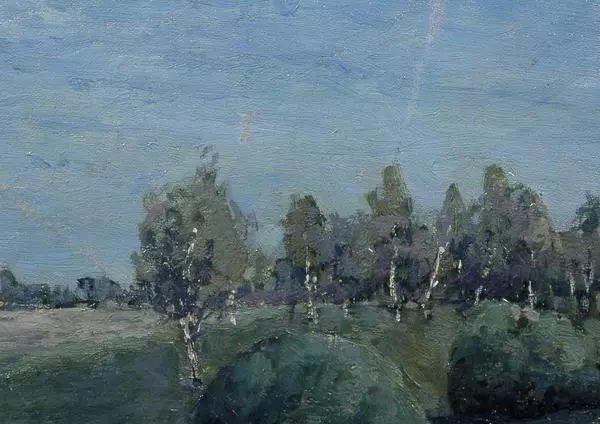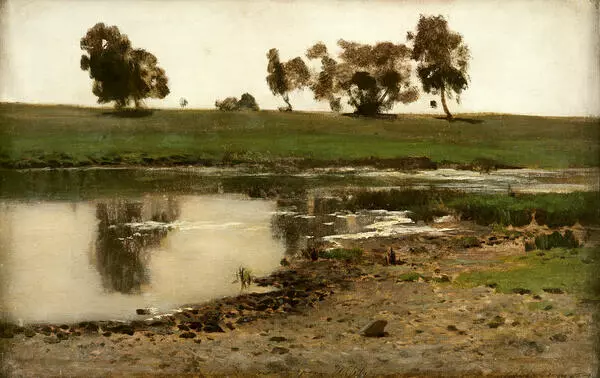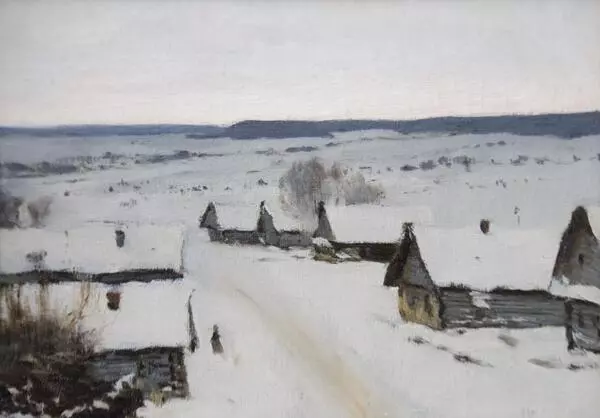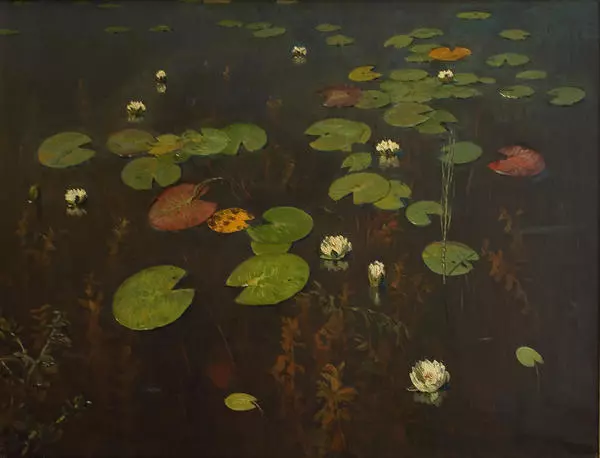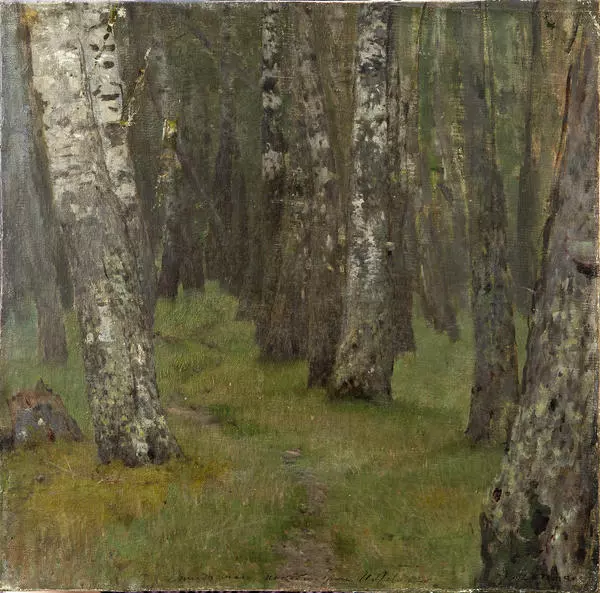Isaac Levitan painted this landscape in 1893 on Lake Udomlya, near the town of Vyshny Volochek (now in the Tver Oblast). The artist spent two consecutive summers in these parts in 1883 and 1884. He painted a lot from nature. Here he created the painting Over Eternal Quiet, which is now held at the Tretyakov Gallery, Moscow.
#3
Isaac Levitan
On the Lake
#2
#4
I.I. Levitan, Over Eternal Quiet, (1893 – 1894). State Tretyakov Gallery.
#5
In the painting On the Lake Levitan depicted the end of a warm summer day. He conveyed a feeling of evening silence when everything freezes and prepares for the night. On the lake stand several huts. The sunset light illuminates the tree tops in the background. The last rays of the sun are reflected in the lake. To depict the sunset glow, the author chose pink, green and blue shades. In the picture, he combined cold and warm tones.
The nature in the painting is static: the surface of the water does not flutter, the fishing nets do not move from the wind. The artist deliberately made the composition asymmetric – thus he emphasised the inartificialness of nature. The author painted with broad, sweeping brushstrokes. He did not seek to capture every detail realistically.
For Levitan, the outside world was a reflection of human emotions. He was one of the first to transmit personal feelings through nature’s a state. The subject, composition and colours of his paintings depended on the general atmosphere. The artist worked in the genre of “mood landscape”.
The author of the picture formed his own direction, which was called the Levitanesque landscape. Its principle was described by the artist Konstantin Korovin: “The landscape has no purpose, if it is only beautiful. It should have a story of the soul”. For Levitan, nature was “animated”. He created landscapes that are permeated with a lyrical mood, most often with a touch of sadness.
Konstantin Paustovsky claimed that the artist’s works ‘require a slow examination. They do not stun the eye. They are modest and accurate, like Chekhov’s stories, but the longer you look at them, the sweeter becomes the silence of provincial towns, familiar rivers and country roads’.
The landscape On the Lake entered the exposition of the Radishchev Museum in 1924 from the State Museum Fund, prior to which it had changed several private collections.
The nature in the painting is static: the surface of the water does not flutter, the fishing nets do not move from the wind. The artist deliberately made the composition asymmetric – thus he emphasised the inartificialness of nature. The author painted with broad, sweeping brushstrokes. He did not seek to capture every detail realistically.
For Levitan, the outside world was a reflection of human emotions. He was one of the first to transmit personal feelings through nature’s a state. The subject, composition and colours of his paintings depended on the general atmosphere. The artist worked in the genre of “mood landscape”.
The author of the picture formed his own direction, which was called the Levitanesque landscape. Its principle was described by the artist Konstantin Korovin: “The landscape has no purpose, if it is only beautiful. It should have a story of the soul”. For Levitan, nature was “animated”. He created landscapes that are permeated with a lyrical mood, most often with a touch of sadness.
Konstantin Paustovsky claimed that the artist’s works ‘require a slow examination. They do not stun the eye. They are modest and accurate, like Chekhov’s stories, but the longer you look at them, the sweeter becomes the silence of provincial towns, familiar rivers and country roads’.
The landscape On the Lake entered the exposition of the Radishchev Museum in 1924 from the State Museum Fund, prior to which it had changed several private collections.
#6
A.N. Radishchev Saratov State Museum of Fine Arts
читать дальшескрыть
00:00
00:00
1x
On the Lake
Время создания
1893
Размер
109x163 cm
Техника
oil on canvas
Коллекция
17
Открыть в приложении
Поделиться

